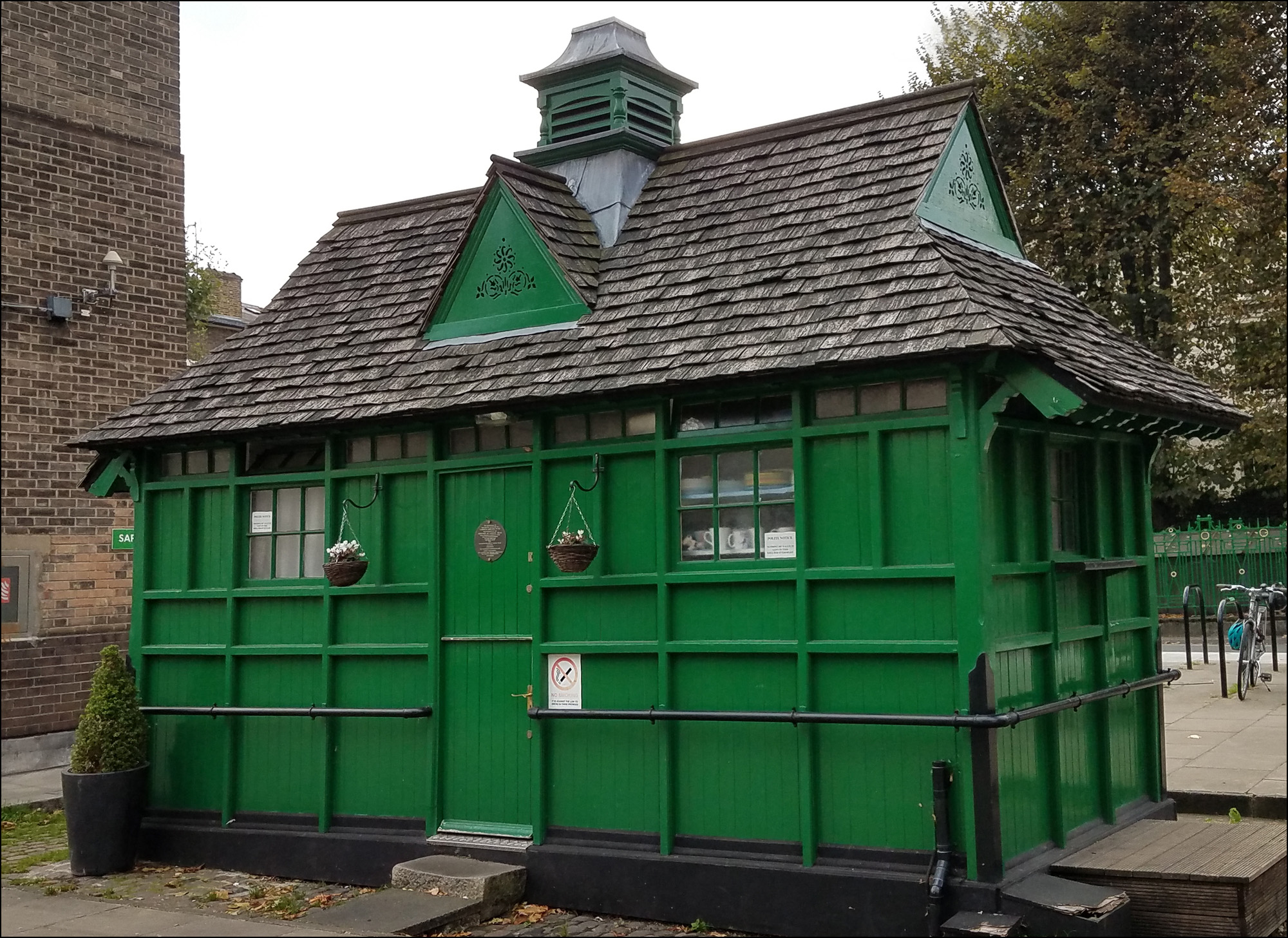I had two odd encounters yesterday, and they’ve both made me curious. What would be your reaction in situations like these?
#1: Someone’s in the way of my picture.
Exiting the tube in Little Venice, I came across a restored cabman’s shelter. I stepped around to take a picture, but there was a bikeshare stand nearby and a guy came up to get a bike. So I lowered my phone. He got his bike and started walking off, so I raised my phone. Then he decided the seat wasn’t quite right, so he worked on that. I lowered my phone. He finished up, and I raised my phone. Then he stopped to make sure his water bottle was secure. I lowered my phone. Finally he began walking off, so I raised my phone again. Then he stopped to chat with a friend, so I put my phone down. He turned around:
“Do you want to take a picture?”
I nodded.
“You just have to ask. Say you want to take a picture and I’ll get out of the way.”
I didn’t react at all because I was sort of gobsmacked at the whole idea. I take thousands of pictures, and I can’t remember ever asking someone to move. As a photographer, you don’t get to order the world around. You just have to make do, either by moving or waiting patiently for the right moment. I would consider it extremely rude to ask someone to move (or hurry up and adjust your damn seat!) just because I wanted to take a picture. Is this still the case? Or are smartphone photos now so ubiquitous that no one takes offense at being asked to move?
(That said, I will note that most people are polite enough to notice when someone is taking a picture and will voluntarily stay out of the way if they can.)
#2: A dog barks at me.
I was eating a piece of cake in Regent’s Park. A dog wandered up to me and I put out my hand. The dog sniffed my fingers and then barked. I pulled my fingers away and then put them back out. The dog appeared (to me) to settle down, so I stroked it a bit.
Then its owner looked up and yelled at me, “No, no, don’t touch her.” Then he came running over. “She sees so many different people, she gets scared. But she won’t bite you.”
This was an area of the park where dogs were allowed to be kept off-lead (I think), so no rules were broken. And the owner wasn’t mad, just worried. Still, if he’s worried about people touching his dog and alarming her, he should keep her on a lead, shouldn’t he?
By the way, here’s the cabman’s shelter:


















